History of the Video Game Console : 2000s
Prologue by Tan |
In March of 2000, after we all had gotten sick of the Y2K jokes and breathed a sigh of relief that the world hadn't ended after all, Sony kicked off the new millennium by releasing their successor to the PlayStation. Steam-rolling
the Sega Dreamcast and getting the jump on Nintendo's GameCube console and newcomer Microsoft's Xbox, the PlayStation 2 had begun a new generation of hardware development and competition which changed gaming's importance in pop culture as
well as telecommunications and entertainment.
With high speed internet access becoming more prevalent late in the 1990s, hardware developers foresaw the future of online gaming and the new possibilities it would bring. Despite the Sega Dreamcast's
lack of success with broadband support, it was clear that it was only a matter of time. With a new console war looming on the horizon, broadband adapters, Ethernet ports and larger storage solutions became standard equipment as online services, faster speeds and worldwide adoption of
high speed internet quickly grew.
As the world shifted in favor of this widespread technological convergence, it gave console designers an opportunity to add new abilities
to each system. |
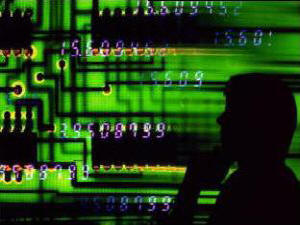 |
Devices like cellular phones could now check email, play games and take pictures. PCs and notebooks could
now shop online for just about anything, keep in touch with long-lost friends and family and well as watch and record television and rip music
almost by default. By the end of the decade, video game consoles had followed suit and became media hubs and social networking devices in
addition to their game playing functions. Increased online usage and connectivity meant that game developers were able to sell their products
directly to the consumer. Taking a cue from the success of services like Xbox Live which was launched in 2002, each major competitor
in the market quickly adopted a marketplace of their own. These markets grew to include music, movies, television shows, independently developed
games as well as rental services for movies. To entice consumers, these products were now able to advertise by offering demos and trailers
of new products. Couple this new approach to marketing with built-in web browsers, the importance of the PC as a research tool for shopping
purposes was diminished.
The games themselves changed dramatically because of it. Blurring the line between PC, arcade and console,
these new systems did a little of all three. Using this new marketplace strategy coupled with internet connectivity, subscription based gaming,
complex strategy and RPG titles as well as simple 2D titles and trivia/puzzle based games were all available from any one system. Digital
distribution and backwards compatibility also allowed games from the past to breathe new life with a new audience who may not have enjoyed
these classics before. This helped to bridge the gap between older gamer and young by offering equal parts nostalgia and new experience which
broadened the market appeal of gaming. It also allowed for micro-transactions, which add bits and pieces of content to both downloaded and
disc based games as well as fixes for programming errors discovered after they've hit retail. |
 |
However, the 2000s weren't just about becoming media Swiss army knives or entertainment hubs. It was an age of innovation as well. The decade
started with cartridges losing ground to disc-based media; it ended with disc-based media losing ground to digital distribution. In 2001, each
system had a dual stick, shoulder buttoned gamepad as its main form of control. In 2010, the new age of motion control begins as Microsoft
and Sony catch up to Nintendo as they adopt new technologies to capture some of that market share Nintendo has dominated
since the Wii's debut in 2006.
Whether you're a button pressing, disc buying traditionalist,
an arm swinging, digital distribution sofa shopper, or something in between, you realize that overall, the 2000s represent the biggest fundamental
change in the direction of gaming to date, both technologically and socially. These complex, multi-tasking game systems weren't merely just
stepping-stones in gaming history, they were focal points which shifted the industry's direction to encompass more than just gaming as its
staple and primary function.
The following overviews represent the systems which were released during this decade which spans from 2000 to 2009.
|
|
2000 - NUON Technology |
 |
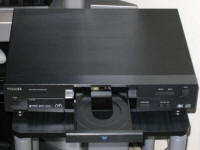 |
VM Labs Inc. had developed a technology called NUON
which transformed passive digital video products such as DVD players, digital satellite receivers and digital set-top boxes into complete
interactive video game entertainment systems. The powerful NUON processor provided the raw horsepower to decode digital video and audio,
while delivering advanced trick modes and an enhanced user interface. The NUON operating system provided a powerful
platform for interactive content.
Read more...
|
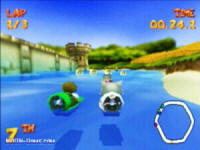 |
|
2000 - Sony PlayStation 2 |
 |
 |
In 1997, rumors began to surface about the successor to Sony's PlayStation console. Those rumors became reality in 1999 when Sony
began talks of a new console called the PlayStation 2 (PS2). This next generation system would use the immense storage of DVD,
would use the raw processing power of a chip called the "Emotion Engine" and was able to play DVD
movies and music CDs right out of the box and be backwards compatible with the original PlayStation software.
Read more... |
 |
|
2001 - Nintendo GameCube |
 |
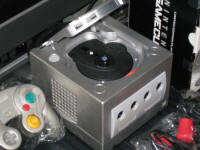 |
At Electronic Entertainment Expo (E3) in 1999, Nintendo announced the initial specifications for its next-generation console,
code-named Dolphin. The first thing that Nintendo made clear was that the new system would not use a cartridge medium. This new
console was revealed on August 24, 2000 at their Nintendo Spaceworld show. The console, which was being called Starcube, was
officially named the Nintendo GameCube.
Read more... |
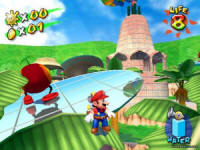 |
|
2001 - Microsoft Xbox |
 |
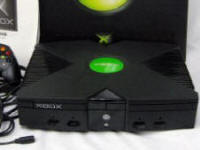 |
Rumors concerning Microsoft and a console project began surfacing as early as 1999. Although they have been involved in PC
gaming for years, Microsoft initially became involved in the console hardware market with their operating system that ran Sega
Dreamcast. There is a strong possibility that this motivated Microsoft to enter the console market. In March of 2000,
the world's worst kept secret becomes public knowledge.
Read more... |
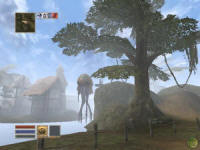 |
|
2001 - Panasonic Q |
 |
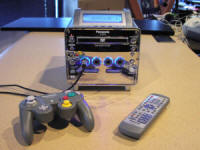 |
During the development of their GameCube gaming system, Nintendo partnered with Matsushita-owned Panasonic to manufacture the disc
drive for their console. As part of this agreement, a license was issued to Panasonic to be able to utilize the base GameCube
software technology for their own system, if they chose to do so. Needless to say, Panasonic decided to exercise this contract
clause and released one of the most visually attractive hardware units of all time - the Panasonic Q.
Read more... |
 |
|
2003 - Nintendo iQue |
 |
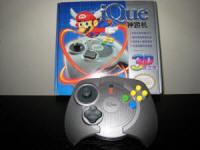 |
One of the lesser known consoles released by Nintendo, the iQue debuted in China on November 21, 2003. The published
intention of this system was to allow gamers easy and affordable access to past Nintendo game releases for both the Super
Nintendo/Famicom and N64. In reality, the truth behind its incarnation seems to lie somewhere in between their attempt to
govern the illegal distribution of game ROMs while profiting from the reissuing of past games. This console was only sold in
China.
Read more... |
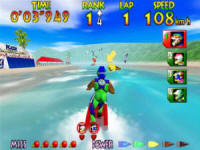 |
|
2003 - Sony PSX DVR |
 |
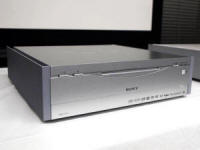 |
Multimedia & gaming devices have been around the industry since the 1990s (3DO, Pioneer LaserActive, and Philips CD-i). They are
usually high in price, and chock full of features. In December of 2003, Sony decided to market its own feature rich multimedia
device. The Sony PSX is a high priced multimedia device designed to be the center of your home entertainment experience.
Read more... |
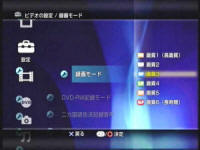 |
|
2004 - SSD Company XaviXPORT |
  |
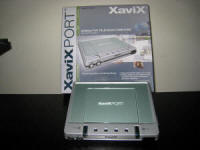 |
Prior to releasing their revolutionary controller with the debut of Wii, Nintendo had previously experimented with this in 1995
with the release of Laserbirdie, a golf game simulator for the Super Famicom. Though Nintendo does own the bragging rights to be
the first to actually implement motion-sensing technology into a game, the Wii can not lay the same claim in regards to a console. That honor belongs to SSD Company Limited with their release in 2004 of the XaviX Interactive System (XaviXPORT).
Read more... |
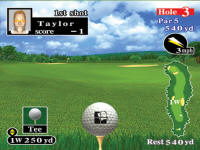 |
|
2004 - DISCover Technology |
 |
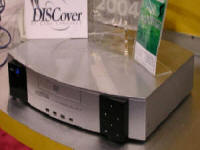 |
At the Electronic Entertainment Expo (E3) 2003, Digital Interactive Systems Inc (The "DIS" in DISCover) debuted a patented
technology that allowed console gamers the ability to play computer PC games on a console like machine. The machines themselves
were merely computer components in a compact casing. It is even driven by Microsoft's Windows XP computer operating system. So
what makes it special?
Read more... |
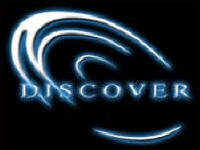 |
|
2005 - Microsoft Xbox |
 |
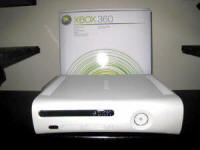 |
In November of 2001, Microsoft made its first entry into the videogame console market. It was a slow battle uphill, but their Xbox
console gained ground. It eventually became a fitting rival for veteran console maker Nintendo and the console market leader Sony. Microsoft believed they would have gained a larger stake in the videogame market if they had released the Xbox sooner. They
planned on proving this by being the first to unveil the next generation successor.
Read more.... |
 |
|
2005 - ZAPiT Games Game Wave |
  |
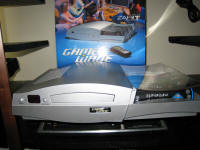 |
The idea of a gaming enhanced DVD player was nothing new when the ZAPit Games Game Wave was released. The NUON had already tried
to meld the two technologies with limited success. However, the Game Wave was not released to appeal to gamers and was rather
released primarily as a family game system. As such, the Game Wave doesn't feature any games from the mainstream genres, such as
FPS or adventure, so most gamers won't be interested in it.
Read more... |
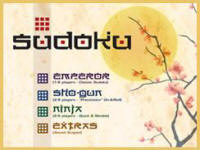 |
|
2006 - Nintendo Wii |
 |
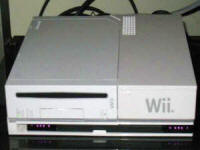 |
In the mid 1980s, Nintendo became both a savior and a dominant force to video gaming as we know it. Twenty plus years later,
Nintendo continues to remain a contender in the console market. It would come as no surprise that they would enter the next
generation console war with their codename "Revolution" console. As usual Nintendo kept a tight lip about their new console,
but leaked out info from as early as 2004.
Read more... |
 |
|
2006 - Sony PlayStation 3 |
 |
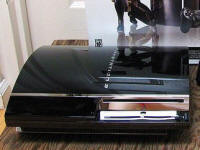 |
Back in the 1990's nobody expected an electronics company to emerge as a dominant force in the console gaming industry. The
original PlayStation helped bring three dimensional (3D) CD quality gaming to the next level. Their successor, the PlayStation 2,
brought multiprocessing DVD quality gaming with backward compatibility. It was only a matter of time before Sony made the next
generation step, and debuted the PlayStation 3.
Read more... |
 |
|
2009 - Envizions EVO Smart Console |
 |
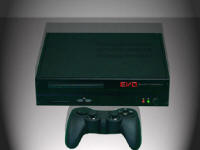 |
We wonder where the inspiration for this device came from? Sarcasm aside, Envizions Computer Entertainment had produced a Media
Center PC that could be taken as a "PC in a videogame console" shell. The EVO: Phase One was the conceptual brainstorm of founder
Derrick Samuels in 2003. Although it looks like a console, the EVO: Smart Console is still a multimedia PC. It claimed to have
many bells and whistles like streaming content, DVR capability and the ability to run PC
games.
Read more...
|
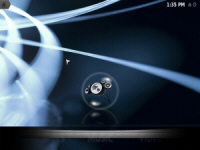 |
|
|
 DISCUSS
DISCUSS